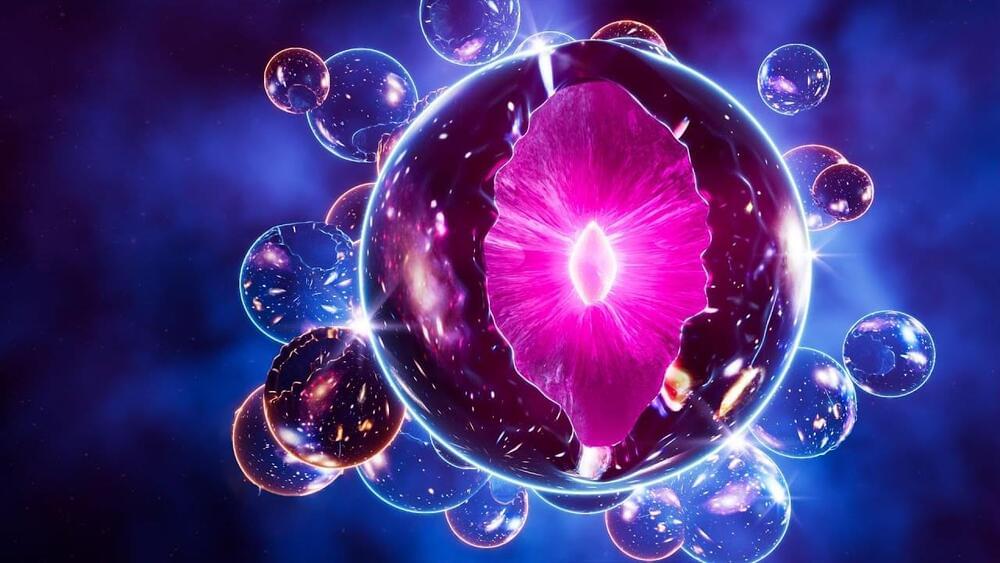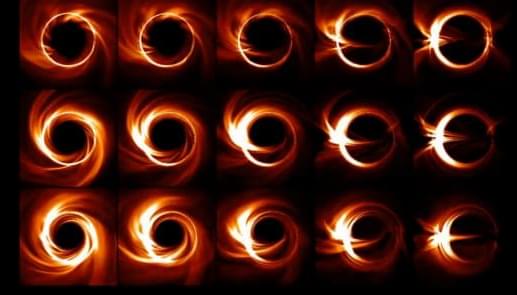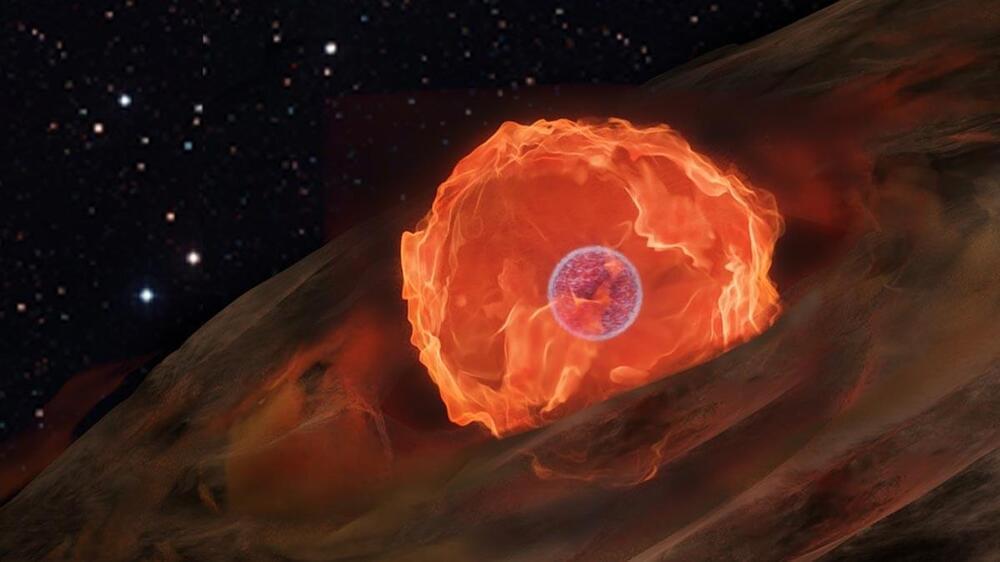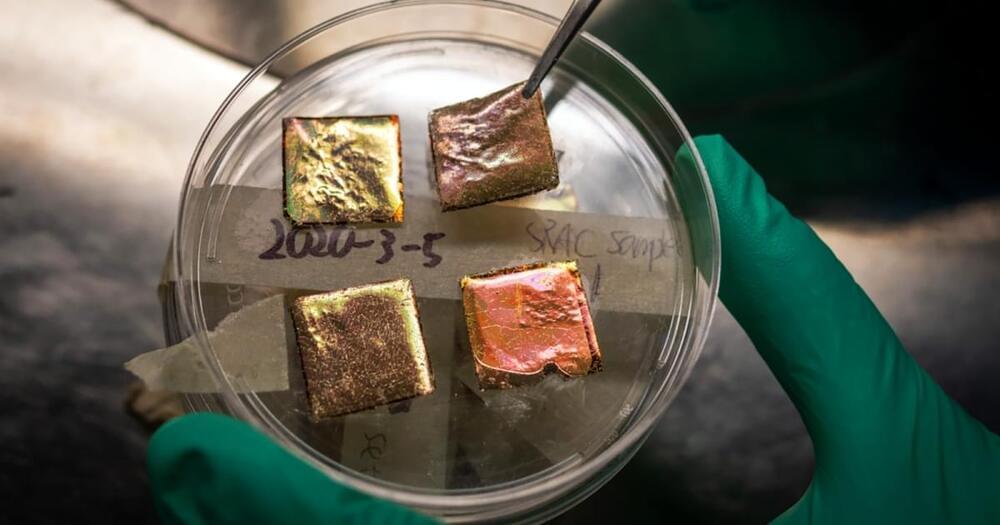Archive for the ‘physics’ category: Page 150
May 16, 2022
Rapid Neutron Capture: Astronomers Discover “Gold Standard” Star in Milky Way
Posted by Genevieve Klien in categories: chemistry, physics, space
A team of astronomers led by University of Michigan’s Ian Roederer and including Carnegie’s Erika Holmbeck have identified the widest range of elements yet observed in a star beyond our own Sun. Their findings will be published in The Astrophysical Journal Supplement Series.
The researchers identified 65 elements in the star, which is called HD 222925. Of these, 42 are from the bottom of the periodic table. Their identification will help astronomers better understand rapid neutron capture process — one of the main methods by which the universe’s heavy elements were created.
“To the best of my knowledge, that’s a record for any object beyond our Solar System. And what makes this star so unique is that it has a very high relative proportion of the elements listed along the bottom two-thirds of the periodic table. We even detected gold,” explained Roederer, a former Carnegie postdoc. “These elements were made by the rapid neutron capture process. That’s really the thing we’re trying to study: the physics in understanding how, where and when those elements were made.”
May 16, 2022
Our Reality May Only Be Half of a Pair of Interacting Worlds
Posted by Shubham Ghosh Roy in categories: mathematics, physics
Physicists sometimes come up with bizarre stories that sound like science fiction. Yet some turn out to be true, like how the curvature of space and time described by Einstein was eventually confirmed by astronomical measurements. Others linger on as mere possibilities or mathematical curiosities.
May 15, 2022
Explosion on a White Dwarf Star Observed for the Very First Time
Posted by Quinn Sena in categories: energy, physics
When stars like our Sun run out of fuel, they contract to form white dwarfs. Such dead stars can sometimes flare back to life in a super-hot explosion and produce a fireball of X-ray radiation. A research team from several German institutes including Tübingen University and led by Friedrich-Alexander-Universität Erlangen-Nürnberg (FAU) has now observed such an explosion of X-ray light for the very first time.
“It was to some extent a fortunate coincidence, really,” explains Ole König from the Astronomical Institute at FAU in the Dr. Karl Remeis observatory in Bamberg, who has published an article about this observation in the reputable journal Nature, together with Prof. Dr. Jörn Wilms and a research team from the Max Planck Institute for Extraterrestrial Physics, the University of Tübingen, the Universitat Politécnica de Catalunya in Barcelona, and the Leibniz Institute for Astrophysics Potsdam. “These X-ray flashes last only a few hours and are almost impossible to predict, but the observational instrument must be pointed directly at the explosion at exactly the right time,” explains the astrophysicist.
“These so-called novae do happen all the time but detecting them during the very first moments when most of the X-ray emission is produced is really hard.” —
May 15, 2022
Physicists Say There May Be Another Reality Right Beyond This One
Posted by Quinn Sena in categories: materials, physics
For those of us worried the world somehow got trapped in the wrong timeline, relax — scientists are now saying there might actually be two realities.
Two researchers from the University of Maryland released their findings in a study earlier this month in the journal Physical Review Research. According to a university press release, though, a second reality isn’t exactly what they set out to find. While studying layers of graphene, made with hexagons of carbon, the found repeating patterns that changed the way electricity moves.
Based on their research, the pair think they accidentally found a clue that could explain some of our current reality’s mysteries. According to the university’s media arm, they realized that experiments on the electrical properties of stacked sheets of graphene produced results that looked like little universes and that the underlying causes could apply to other areas of physics. In stacks of graphene, electricity changes behavior when two sheets interact, so the two hypothesize that unique physics could similarly emerge from interacting layers elsewhere—perhaps across the entire universe.
May 14, 2022
Physicists Say the Universe Wasn’t Born from the Big Bang. But How?
Posted by Dan Breeden in categories: cosmology, physics

There have appeared many new scientific discoveries since that time, and many of them shake the foundations of the famous theory. It’s full of gaps and unanswered questions. So doesn’t this mean it’s not that perfect?
In this video, I’ll tell you: how many dimensions can the Universe have? What if the world was made of liquid? And most importantly, you’ll find out why the Big Bang theory can be wrong.
May 13, 2022
Gravitational Wave Scientists Pioneer New Laser Mode Sensor With Unprecedented Precision
Posted by Saúl Morales Rodriguéz in categories: cosmology, physics
Lasers support certain structures of light known as “eigenmodes.” An international collaboration of experts in gravitational waves.
Gravitational waves are distortions or ripples in the fabric of space and time. They were first detected in 2015 by the Advanced LIGO detectors and are produced by catastrophic events such as colliding black holes, supernovae, or merging neutron stars.
May 11, 2022
Gravity signals could detect earthquakes at the speed of light
Posted by Dan Breeden in categories: climatology, computing, information science, physics
Algorithm set for deployment in Japan could identify giant temblors faster and more reliably.
Two minutes after the world’s biggest tectonic plate shuddered off the coast of Japan, the country’s meteorological agency issued its final warning to about 50 million residents: A magnitude 8.1 earthquake had generated a tsunami that was headed for shore. But it wasn’t until hours after the waves arrived that experts gauged the true size of the 11 March 2011 Tohoku quake. Ultimately, it rang in at a magnitude 9—releasing more than 22 times the energy experts predicted and leaving at least 18,000 dead, some in areas that never received the alert. Now, scientists have found a way to get more accurate size estimates faster, by using computer algorithms to identify the wake from gravitational waves that shoot from the fault at the speed of light.
“This is a completely new [way to recognize] large-magnitude earthquakes,” says Richard Allen, a seismologist at the University of California, Berkeley, who was not involved in the study. “If we were to implement this algorithm, we’d have that much more confidence that this is a really big earthquake, and we could push that alert out over a much larger area sooner.”
Continue reading “Gravity signals could detect earthquakes at the speed of light” »
May 11, 2022
Discovering new properties of magnetism that could change our computers
Posted by Dan Breeden in categories: computing, physics
Modern computers use electrons to process information, but this design is starting to reach theoretical limits. However, it could be possible to use magnetism instead and thereby keep up the development of both cheaper and more powerful computers, thanks to work by scientists from the Niels Bohr Institute (NBI) and University of Copenhagen. Their study is published in the journal Nature Communications.
“The function of a computer involves sending electric current through a microchip. While the amount is tiny, the current will not only transport information but also contribute to heating up the chip. When you have a huge number of components tightly packed, the heat becomes a problem. This is one of the reasons why we have reached the limit for how much you can shrink the components. A computer based on magnetism would avoid the problem of overheating,” says Professor Kim Lefmann, Condensed Matter Physics, NBI.
“Our discovery is not a direct recipe for making a computer based on magnetism. Rather we have disclosed a fundamental magnetic property which you need to control, if you want to design a such computer.”
May 10, 2022
Smart roof coating uses physics trick to warm or cool the house, depending on the season
Posted by Shane Hinshaw in categories: habitats, physics
Rooftop coatings can keep homes cool — like cooling paper that helps radiate heat away. Or they can trap heat inside, keeping homes warm.
But what is the optimal rooftop coating for homes with both a hot and cold season?
Scientists have come up with an answer: an all-season covering that keeps homes warm in the winter and cool in the summer.
















